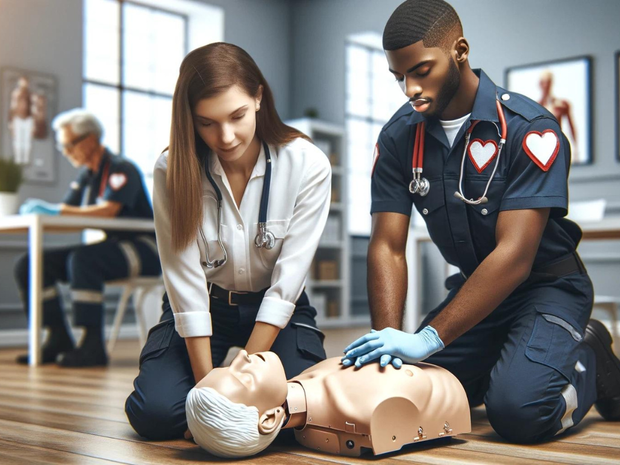There are few other careers that speak quite as highly of a desire to help people as emergency medical services. And judging by your very presence here—as opposed to Facebook, Instagram, or the bottomless “funny animal video” coffers of YouTube—you’re serious about equipping yourself with the right tools and strategies to ace your EMT training.
First of all, that’s ridiculously awesome, and we, the Brainscape team, want to help you achieve your goal of acing your EMT training. So, in this guide, which you now hold in your virtual hands, we shall do the following intrepid tasks:
- Give you some insights into how the NREMT EMT certification exam works
- Review the topics covered in your EMT training
- Teach you how to learn more efficiently for your EMT certification
- Show you some game-changing strategies for exam day
- Answer: how long does it take to become an EMT?
And generally equip you with the resources you need to rise to the challenge of your EMT certification, with a focus on doing well in the EMT exam. To do all of this, we consulted with the veritable oracle of emergency medical training, Jeralyn Price, on what it takes to do well in EMT school.
Jeri is a nationally registered and certified paramedic and EMS instructor with a staggering 33+ years of experience under her belt. She’s taught over 100 EMT courses, including CPR, EMR, Paramedic, ACLS, IV, EKG, PHTLS, PALS, and many more eye-boggling acronyms.
I could go on, but suffice it to say that we landed “the big one” with Jeralyn as our resident oracle on all things emergency medical training. Here's her advice.
What Does The EMT Certification Exam Involve?
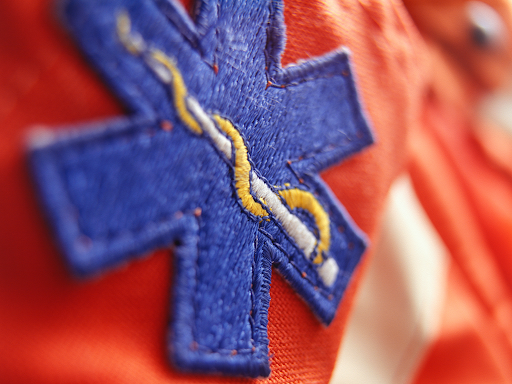
The National Registry of Emergency Medical Technicians ® (NREMT) EMT certification exam is a two-hour affair of between 70 and 120 questions. Basically, you need to answer 70% of the questions in each topic correctly in order to pass your EMT training, so if you do that in one hour, as opposed to two, you can head on over to Happy Hour for half-price appetizers a little early. Chicken wings on you!
(Naturally, understanding how the exam works, students can start to feel super anxious as they progress past question number 70. But not you, because our goal is to get you 100% prepared!)
What Topics Are Covered By My EMT Training And Exam?
The NREMT EMT certification exam consists of a cognitive (written) exam and the psychomotor (practical) exam. The former covers the following topics:
- Airway, respiration, and ventilation: 18 to 22% of the questions
- Cardiology and resuscitation: 20 to 24% of the questions
- Trauma: 14 to 18% of the questions
- Medical, obstetrics, and gynecology: 27 to 31% of the questions
- EMS operations: 10% to 14% of the questions
From question to question, the exam will tend to alternate between these topics. Also, each question ranges in difficulty, from level 1 questions, which are pretty simple and should trigger immediate recall, to level 6 questions, which require you to consider a unique patient scenario and use critical thinking to decide what the next best steps are.
Another important thing to note is that the EMT certification exam questions are not asked in a linear fashion (i.e., from easy to hard). Rather, if you get a question wrong, the next one posed to you on that topic will be more difficult.
So, for example, the exam might open with a mid-level difficulty question on childbirth. This may be followed by a slew of questions on other topics (like documentation, pharmacology, and cardiology) before you get another one on childbirth. This time around, however, its difficulty will be determined by whether you got the first question right or wrong.
In this way, you’re kept on your toes throughout the exam, constantly jumping between topics and topic difficulty, employing active recall to answer one question and critical thinking the next.
Top Tips For Acing Your EMT Certification
Now that you know what to expect from the NREMT EMT training exam, we’re going to explore some really useful advice on studying more efficiently. This really is key when you consider the amount of information you need to learn in EMT school and the fact that someone’s life will probably, one day, depend on you having learned it well.
No pressure, right?
Let’s start out with the foundations: reading a textbook that could otherwise function as a perfectly effective doorstop ...
1. Read And Study The Textbook Diligently
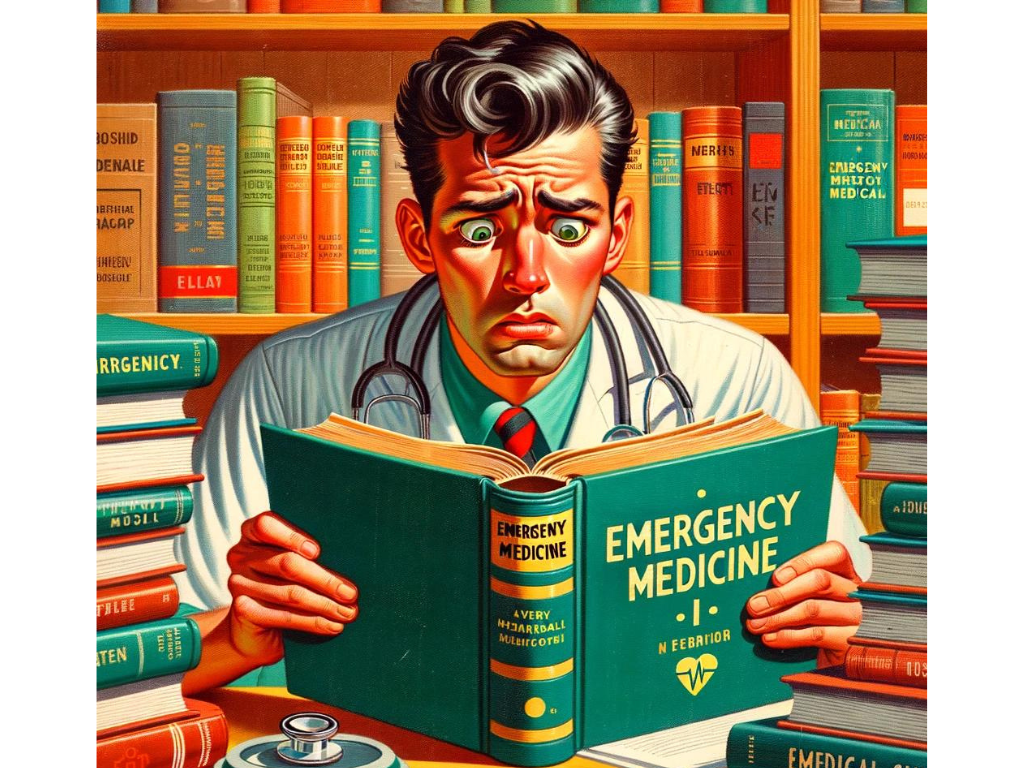
Yep, all 1,000+ pages of it.
There is no way around the challenge of reading your EMT training textbook but there is a way through it that can make it way more tolerable. Here are some hard and fast points you can apply right away:
- Make sure you have the most current edition of the textbook, and that it follows the National EMS Educational Standards.
- Start a chapter by reading through the objectives or chapter outline, making sure you understand what the learning outcomes are. These will become a roadmap for your learning, keeping you focused on what’s important.
- Survey (skim read) the rest of the chapter briefly, so that you have that 30,000-foot view of what you’ll be learning about. This will also help you keep your note-taking succinct and focused.
- At this point (before you read the chapter in-depth), write down some of the questions you would like answered. In other words: stoke your own curiosity! This will prime your brain to learn when you encounter the answers to your own questions.
Now it’s time to jump in. Here are some tips for reading a textbook that won’t commit you to stage three sleep:
- Try reading out loud. It’ll slow you down and force you to consider the words your eyeballs are skating over. Also, subconsciously, hearing your own voice will help you retain and comprehend that information.
- Once you’ve read a chapter, close your book and talk out loud about what you just learned. Better yet, teach it back to your pet cat or money plant. Teaching is, ironically, one of the most powerful ways to learn a subject. It’s called the Feynman Technique, and it works! See one, do one, teach one.
- Write down the most succulent nuggets of information so that you can review them frequently, alongside a digital flashcards app like Anki or Brainscape, which breaks this information down into even more succinct question-and-answer facts.
- You can also try doing some sort of kinesthetic movement while studying, such as gently snapping a hair tie on your wrist or rolling a pen/pencil between your fingers ... something you can easily replicate while taking the NREMT EMT certification exam.
If you do all of the above, you won’t get caught in an endless, torturous cycle of having to read, re-read, and re-read your textbook because you stopped concentrating or fell into a coma halfway through a chapter.
Rather, you’ll read it in one carefully considered go, gleaning the important stuff from it. And after that, you can lean on your study notes and flashcards to memorize and understand the content, only referencing the textbook when necessary.
Before we move on, let us be clear: you REALLY DO NEED to read and study the ENTIRE textbook: it is the foundation of your learning, which will be expanded upon by your EMT school program. You wouldn’t want to be seen by a doctor who cherry-picked their education. Therefore, you shouldn’t do the same.
2. But First … A Few EMT School Textbook Truths
Okay, after ALL of that stuff about how important the emergency medical training textbook is, we do need to be a little candid …
Medicine and technology (and, therefore, “best practices”) are evolving at such a rate of knots that they can outpace the publishing of new edition textbooks. As a result, it’s not uncommon for students to come across some information that’s outdated or even downright wrong. This is why it’s crucial for you to pay attention in class.
But this isn’t all.
The National EMS Educational Standards can sometimes be quite VAGUE, leaving it largely up to EMT schools, instructors, and textbook publishers to interpret the guidelines and fill in the gaps.
For example, a guideline might read: “Students must know what a sucking open chest wound is and how to treat the injury”. But it won’t say anything about how in-depth such instruction should be. Consequently, some institutions only cover the basics while others dive unnecessarily deep into the pathophysiology of the injury.
And this can be confusing for students, not to mention a total time-waster.
What should you do about it? Lean on your EMT school. It’s up to them to provide you with guidance on what you need to know for your exam. And if you’re particularly confused about a chapter going neck-deep on a topic, ask your instructor whether it deserves a lot of attention or not.
3. Prepare For Class By Reviewing The Content Beforehand
You’ve got the tools to process the textbook efficiently, and without falling asleep. Now, here’s another really important piece of the puzzle: read the chapter/s you will be learning in class the day before (or morning of, if you have time).
Yes, you’ve probably been doing it the other way around up until this point, but considering the firehose of information you need to learn in order to become an EMT, now’s the time to do things the right way.
So, read and process the necessary chapters before class so that you can get the basics out of the way. This will free your brain up to focus on skills practice, asking questions, and addressing weaknesses in class, which is the best possible use of your instructor’s time.
Pro Tip: If you cover anything new/important in class, make sure you add it to your study notes for review later on. These notes will go on to become a super important asset to you as you prepare to take on your EMT training exam!
4. Learn The Facts From Day One (Don’t Cram!)
With so many crucial facts to pack into your brain, it’s important that you begin the task of memorizing them from day one, and NOT a few days before the exam like you did in high school.
Flashcards are one of the most effective ways to prepare for the NREMT EMT exam because they make it easier to lock down the huge volume of medical facts, terminology, and procedures you’ll need to recall under pressure. Here’s the science behind why digital flashcards are one of the most powerful learning tools you can use.
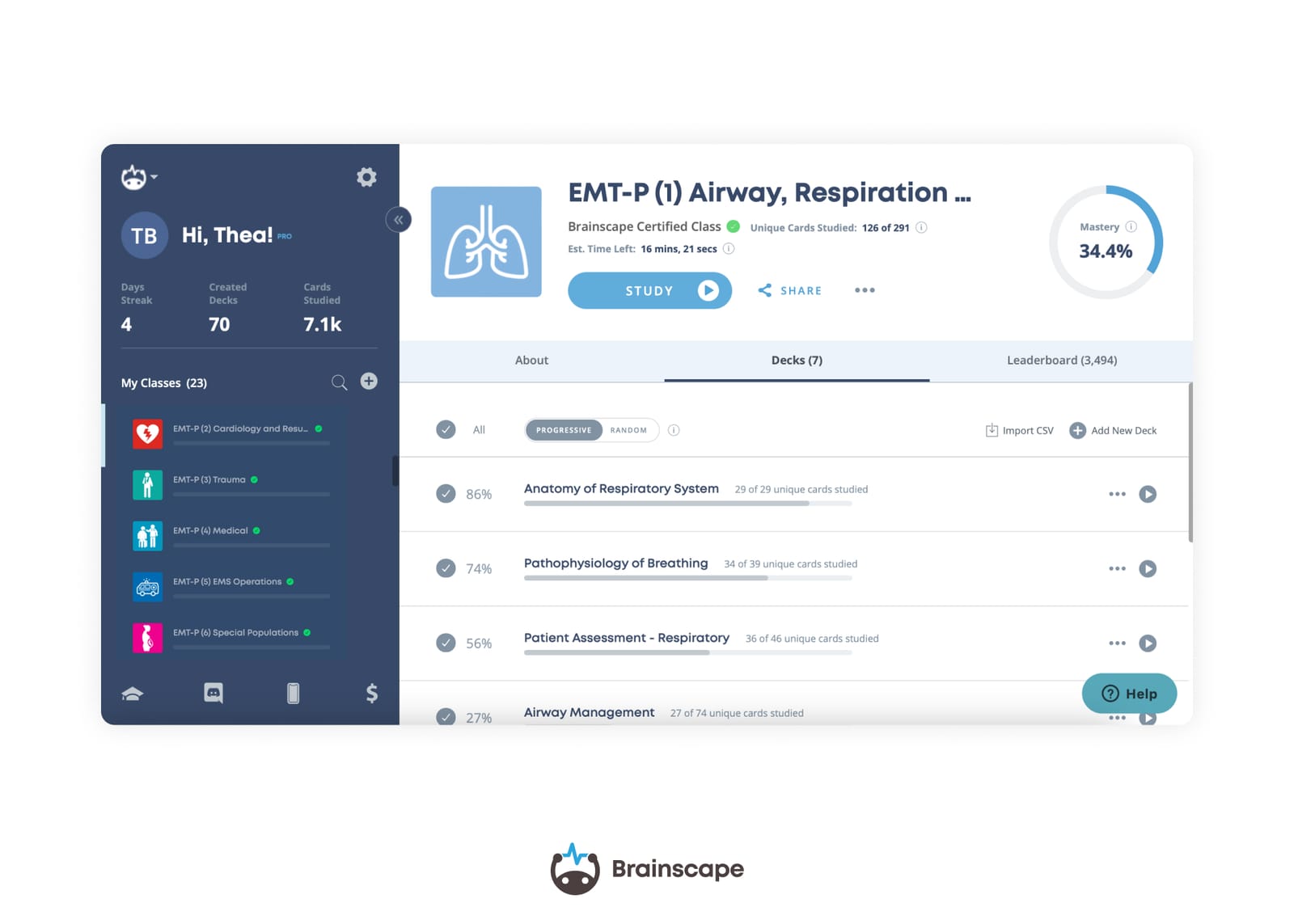
Active recall: Instead of rereading your notes or scanning a study guide, flashcards require you to pull the answer directly from memory. That retrieval effort builds stronger memory pathways and dramatically improves recall speed, which is crucial both during the exam and in real-life emergency scenarios, where seconds matter.
Spaced repetition: Human memory fades quickly without review. By returning to material at just the right intervals, you reinforce knowledge before it slips away. It’s like practicing CPR or splinting: one run-through isn’t enough. You need repeated practice over time to make the skills automatic. Hundreds of studies have shown that spaced repetition increases learning efficiency.
Digital flashcard apps like Brainscape or Quizlet handle this scheduling for you. Their adaptive algorithms bring tricky material back more often and let mastered content fade into the background. That way, you’re always studying at your most efficient pace and keeping knowledge ready for long-term retention.
Metacognition: After each flashcard, you reflect on how well you knew the answer. This builds self-awareness about your strengths and weak spots, helping you target study time where it matters most instead of wasting effort on material you’ve already nailed. Plus, the act of assessing how well you know a concept improves your memory of it.
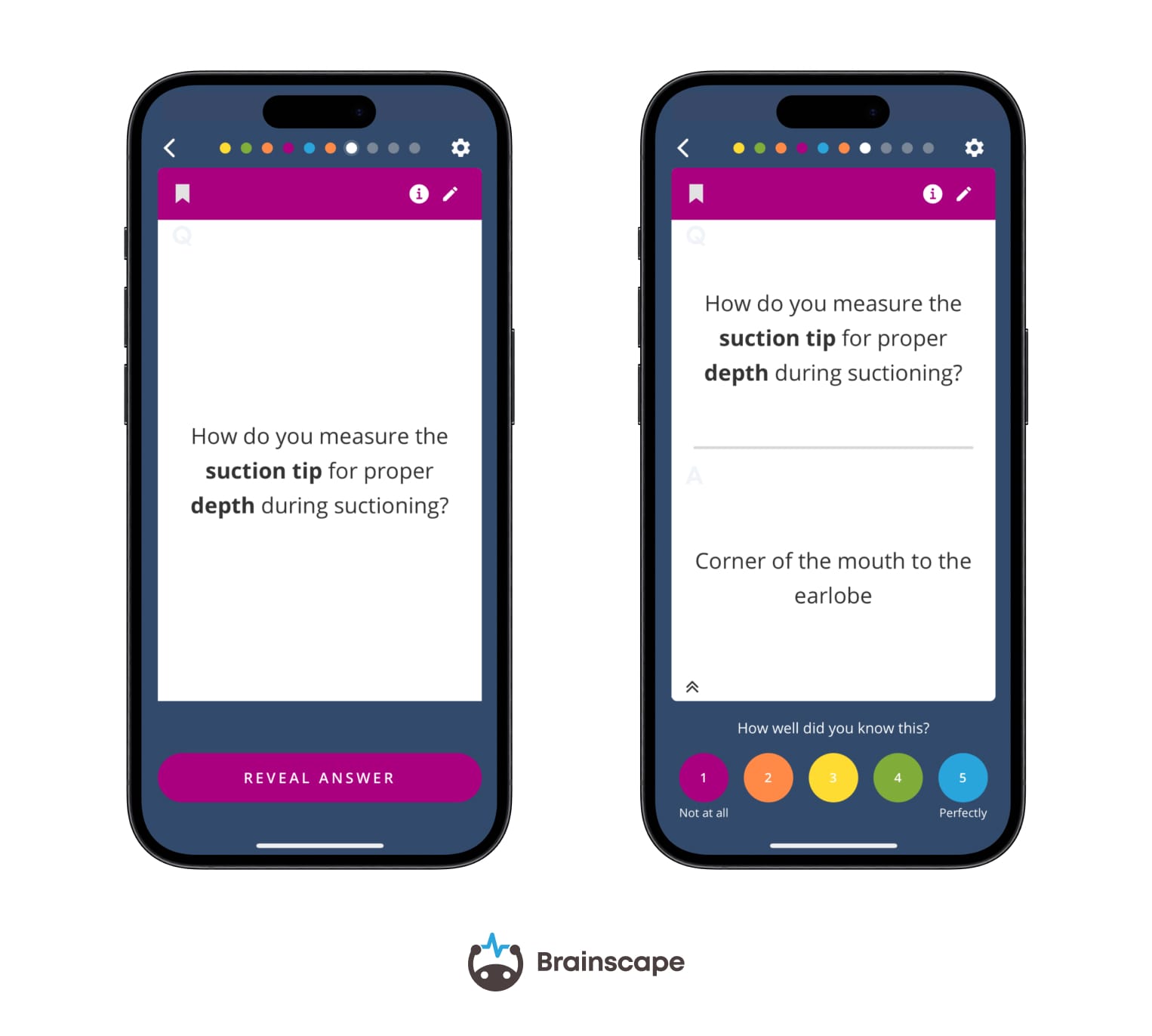
Another major benefit of digital flashcards is their flexibility. You can study in short bursts during lunch, on a commute, or between clinical shifts. Many EMT candidates find they can fit in dozens of cards during downtime that would otherwise be lost.
Bottom line: if you need to memorize protocols, terminology, and anatomy for the NREMT EMT exam, there’s no study tool more efficient than digital flashcards.
So, to recap:
- Process the relevant textbook chapters before class,
- Attend class and get any important questions answered,
- Update your notes to reflect anything new and important learned, and
- Use flashcards to drill yourself on the relevant chapters covered in class that day.
5. Do Practice Exams And Questions
It’s imperative for your successful preparation that you do as many practice questions and exams as you can get your hands on. And the sooner you do them—even right from the beginning of your EMT training—the better! Here’s why: answering practice questions shows you ...
- How the information you’re learning will be tested in the exam,
- The important concepts you should be paying attention to,
- How to use critical thinking and reasoning to arrive at the best possible answer
- Which concepts/facts you might have a problem with (and therefore need to focus on)
- That your EMT certification final exam isn’t all THAT scary!
Moreover, seeing the information framed as exam questions will help you remember it SO much better than if you just read it in a textbook. (There’s nothing like the threat of seeing something show up in an exam to compel your brain to hang on to that information.)
Pro Tip: When you do a practice exam, set a timer for two hours so that you learn how to manage your time properly.
6. Use Your Emergency Care Practical Skills To Your Advantage
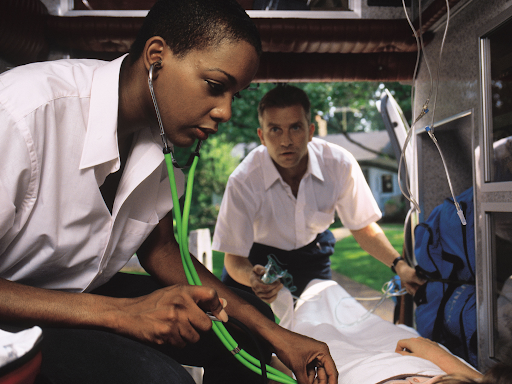
The “written” cognitive exam is only one-half of your final EMT training assessment. The other half is the psychomotor exam, during which you’ll need to demonstrate that you have the following necessary emergency care skills:
- Patient assessment/management of a trauma patient,
- Patient assessment/management of a medical patient,
- Cardiac arrest management/AED,
- BVM ventilation of an apneic patient,
- long bone fracture immobilization,
- Joint dislocation immobilization,
- Bleeding control/shock management,
- Oxygen administration to a breathing patient.
Here are three tidbits of truly indispensable advice:
Practice,
Practice perfectly, and
Practice perfectly again and again and again. (Yes, spaced repetition applies to learning skills as well as facts.)
Also, know why and when to use these skills. (Sorry, that’s four tidbits.) THIS is what you’re becoming an EMS technician for! To be able to perform your emergency care skills seamlessly and confidently, and, in doing so, save lives! And just as you should use spaced repetition to learn all the necessary facts, you should frequently run through your practical skills to make these skills muscle memory.
Pro Tip: Your NREMT EMT Psychomotor Skill Sheet should be memorized with a strong understanding of all of the medical and trauma pathologies and treatments.
Extra Pro Tip: It can help to rewrite the individual steps and instructions in your own words so that you really understand what you need to do (and how). If you’re unable to do that, you probably don’t understand things well enough and should seek guidance.
7. Focus On Developing Your Interpersonal Skills, Too
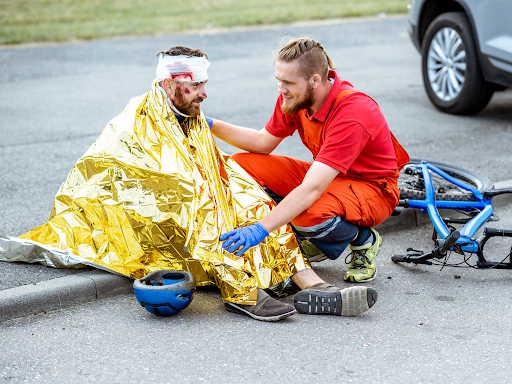
Succeeding with your EMT training is about so much more than just knowing your sh*t. You need to be good with people. Effective communication with patients will earn their trust and make them feel more comfortable, even if they’re incredibly distressed (which they probably will be). Effective communication with your peers, on the other hand, can save lives.
It’s not just you out there in the field: it’s a team effort between you and your colleagues and you and the patient, who is probably the most valuable source of information you have on what’s happened to them, second only to the people who know their medical history, or who witnessed the incident.
You’ll also be giving radio and hand-off reports to the healthcare facilities you deliver your patients to, so work on your communication and interpersonal skills throughout your EMT schooling. Learn to establish a presence and confront any shyness you might have.
With practice, it’ll become second nature to be compassionate, communicative, and confident.
Game-Changing Strategy For The EMT Certification Exam
Exam strategy is oftentimes a sorely overlooked facet of preparation. I mean, I can’t remember a single teacher giving me any advice on how to tackle exams as a challenge. It was always “learn the content and you’ll be fine”.
Meanwhile, with a bit of strategy, I could have managed my time better, been more succinct in my answers, or pandered better to the examiners, which, in all likelihood, may have translated into better scores.
So how about we NOT let that happen to you? Here is a game-changing strategy you can take into your NREMT EMT certification exam with you …
1. Cover Up The Answers First
Yep. No peeking! Reading the answers before you’ve properly assessed the question robs you of the ability to recall the facts from memory, which is most often correct. Also, the answer choices can be distracting and misleading, and even cause you to misinterpret the question. So cover them up with your hands or a blank sheet of paper.
2. Read The Actual Question
Then, skip straight to the question part of the question, if that makes any sense. You know, the sentence with this guy at the end: “?” In other words, skip over the case study or patient scenario description. What you want to do is begin by understanding exactly what the examiner wants from you. This will prime your brain to hunt for the answer when you do assess the context.
Remember, there are typically two things asked of you in the emergency medical training exam: (1) a missing piece of knowledge or (2) the next step that should be taken.
3. Read The Rest Of The Question
Now that you know what is required of you, review the patient scenario. If it’s a particularly long and complex scenario, you could distill the key points into a few words or a single sentence. However, you should be careful about squandering too much time.
4. Answer The Question In Your Head
What’s the patient’s likely diagnosis? What next steps should you take? What are the most prudent interventions? Without looking at the answer choices, think or even write down your answer.
5. Match Your Answer With One Of The Available Choices
Oftentimes, you’ll find an answer choice that comes close to, or is even exactly the same as, what you were thinking. If it’s not there, then use the process of elimination to identify the best available answer. (Or consider if you may have misinterpreted the question and/or patient scenario.)
Now, practice this strategy on the following question:
You’ve been called to a private residence on a “woman down”. Upon arrival, you are greeted by the patient's husband. He states they were outside doing light yard work when his wife suddenly collapsed to the ground and was “weirdly jerking”. Your patient assessment reveals a 50+ year-old woman on her side in the grass. She responds to painful stimuli by flailing her arms, pale, diaphoretic, and incontinent. A small amount of blood is noted in the corner of her mouth. Pulse is rapid and weak, respiratory rate is 18, and lung sounds are clear. You are unable to obtain a blood pressure because the patient keeps flailing her arms around and is now becoming slightly combative. Her husband denies any pertinent medical history or medication for the patient, although he states she had started to complain of a horrible headache before she collapsed.
What is your field impression of this patient?
A. The patient is a victim of domestic abuse.
B. The patient is suffering from hyperventilation syndrome.
C. The patient is postictal from a generalized seizure.
D. The patient is suffering from a traumatic brain injury.
(Find the answer at the end of this guide!)
How Long Does It Take To Become An EMT?
Well, now, that’s entirely up to you!
The EMT certificate program consists of 120 to 150 credit hours, so how you parse that out depends on your lifestyle and other commitments. You could get your EMT training done in as little as three weeks. Or you could take up to a year to complete it.
The most important thing is to assess how long you need to study, then divide that by how much free time you have for study. (Be realistic. A 16-hour Saturday may yield diminishing returns.) Once you have a realistic study plan, you can fit it into your calendar and answer that question for yourself.
A Final Note On Emergency Medical Training
As an EMT-in-training, there’s a whole lot you need to learn. Lives will depend on your ability to operate quickly, decisively, and seamlessly in the field.
But if you approach your EMT training with the principles we discussed in this guide at the core of your efforts, you will perform exceptionally well. We know this because we, and Jerilyn Price, our rockstar EMS coach, have been successfully applying these principles for many, many years.
So, study and practice those emergency care skills like someone’s life depends on it, because someday soon, it will.
You've got this!
***P.S. The answer to that practice question is “C”: The patient is postictal from a generalized seizure.***
Additional Reading
- EMT Jobs: how to get one and be successful!
- Paramedic vs nurse: what's the difference?
- How to ace your paramedic training & the NREMT-P exam
References
EMS Education Standards. EMS.gov. (n.d.). https://www.ems.gov/projects/ems-education-standards.html
Kang, S. H. (2016). Spaced repetition promotes efficient and effective learning. Policy Insights from the Behavioral and Brain Sciences, 3(1), 12–19. https://doi.org/10.1177/2372732215624708
Karpicke, J. D. (2012). Retrieval-based learning: Active retrieval promotes meaningful learning. Current Directions in Psychological Science, 21(3), 157-163.
Sadler, P., & Good, E. (2006). The impact of self- and peer-grading on student learning. Educational Assessment, 11(1), 1–31. https://doi.org/10.1207/s15326977ea1101_1
